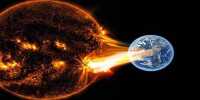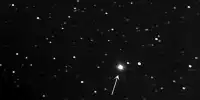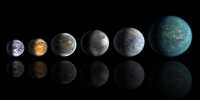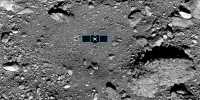2021 featured a number of thrilling events in space exploration, with three trips to Mars, fresh views of Ganymede, and the launch of the largest and most powerful space telescope. In addition, the year 2022 will be just as spectacular. Here is a list of things to keep an eye out for. A NEW EYE ON THE SKY IN JANUARY, the JWST will continue to be the star of the month. As it reaches its operational orbit 1.5 million kilometers (1 million miles) from Earth, the brand-new space telescope might finish its meticulous deployment. The telescope’s structures are currently unfurled, with the equipment reaching their ideal temperature after the enormous solar shields are removed. The telescope will then be ready for calibration and alignment, which will take several months.
MARCH – A MASSIVE LEAP FOR THE MOON RETURN, The Artemis Program will see humanity return to the Moon, and a strong rocket will be required to make the trek to the Earth’s natural satellite. Enter the Space Launch System, which will test no later than March of this year (but it might slip into the boreal summer). The launch will be the first uncrewed Artemis mission (Artemis 1).
It will last a little over 25 days, with the Orion capsule on a six-day retrograde orbit around the Moon. The mission will show that the Orion capsule and launch mechanism are capable of safely transporting humans around the Moon. Artemis 2, with astronauts on board, is scheduled to launch in May 2024 if all goes well.
JAPAN’S TURN TO REACH THE MOON IN APRIL, Only three countries have succeeded in landing on the Moon thus far, China, the United States, and the Soviet Union. India came really close to landing but failed to do so. The Japanese space agency, JAXA, is now preparing to become the fourth. In April, JAXA plans to launch its Smart Lander for Investigating the Moon (SLIM) to the moon. By detecting lunar craters using technologies originally developed for facial recognition systems, the lander will show precise lunar landing. It will land within 100 meters (330 feet) of where it is supposed.
MAY: CHINA’S SPACE STATION EXPANDS, In May, a new module for China’s “Palace in the Sky,” the Tiangong space station, will be launched. Tianhe, the initial core module, was introduced in April and has already been visited by Taikonauts. The following module will be Wentian, a laboratory that will open in May or June. It will also serve as a backup core module and the location for future taikonaut spacewalks. In August-September, a second laboratory module, Mengtian, will launch, expanding the station’s docking capabilities for equipment and supplies.
INDIA’S SPACECRAFT MAKES ITS FIRST FLIGHT IN JUNE; Gaganyaan (which translates to Sky Craft) will make its maiden uncrewed flight in June, according to the Indian Space Research Organization. The ship intended to be a crucial vehicle in India’s Human Spaceflight Program, and if this test goes well, a crewed test would conduct next year. In the same release, the ISRO stated that Chandrayaan-3’s next lunar landing attempt has been pushed back from late 2022 to 2023.
RUSSIA EYES THE MOON AGAIN IN JULY, This year’s exploration clearly dominated by the Moon. Russia, too, wants to return, and it has stated that its Luna program from the 1960s and 1970s would continued. According to the Russian Space Agency, Roscomos, the program has had many achievements with landers, rovers, and even sample returns, and Luna 25 intended to continue in that tradition. This time, the mission is only a lander with sensors to explore the soil that will touchdown near the Lunar South Pole. The site might be of interest for establishing a permanent base on the Moon.
METAL ASTEROID AND LUNAR MISSIONS IN AUGUST, NASA’s Psyche mission, which will go to the Asteroid Belt to explore one of the most peculiar objects in that region of the solar system, is set to launch in the Boreal summer. With a diameter of 226 kilometers, the asteroid is a metal-rich planet (140 miles). This asteroid might have been the center of an ancient planet seed that never developed. In August, the Korea Aerospace Research Institute will launch the Korea Pathfinder Lunar Orbiter, a projected lunar orbiter (KARI). This will be KARI’s first lunar mission and a technological demonstration.
ROSALIND FRANKLIN ROVER FLIES AND TWO FORTUNATE ENCOUNTERS IN SEPTEMBER, The Rosalind Franklin Rover, a joint European Space Agency and Roscosmos mission, is set to launch on September 20 on a seven-month voyage to Mars, where it will begin investigating the red planet and possibly reveal additional evidence regarding the potential of ancient life there.
On September 29, NASA’s Juno spacecraft will sail by Jupiter’s renowned frozen moon Europa, providing the closest views of the planet in decades. In 2021, it produced breathtaking photographs of Ganymede; Jupiter is another large ice moon. The DART spacecraft will arrive at the asteroid Didymos, which is orbited by a tiny moon dubbed Dimorphous, in the final days of September. The expedition will put kinetic impactor technology to the test as a way to divert an asteroid that may be harmful. Didymos not the one that is harmful.
MORE ON DART IN OCTOBER, On October 2, the spacecraft will collide into Dimorphos, modifying its orbit, with the little LICIACube gathering measurements to determine whether the collision was effective.
MORE FIRST FLIGHTS THROUGHOUT THE YEAR, There are many unknowns in space exploration, and timelines frequently vary, especially considering the difficulty of doing science during a worldwide epidemic. Continuing testing of Boeing’s Starliner capsule, which, like the SpaceX crew capsule, should provide a route to fly to the International Space Station, is one of the other interesting (possible) events that may happen this year. However, it has yet to provide the high level of security that is necessary.
After a series of successful testing, SpaceX’s Starship is set to make its maiden trip into orbit this year (including some explosive ones). Finally, as the Ariane 6 rocket tested in its first journey to space, the Ariane 5 rocket that sent JWST into orbit should be decommissioned.
















